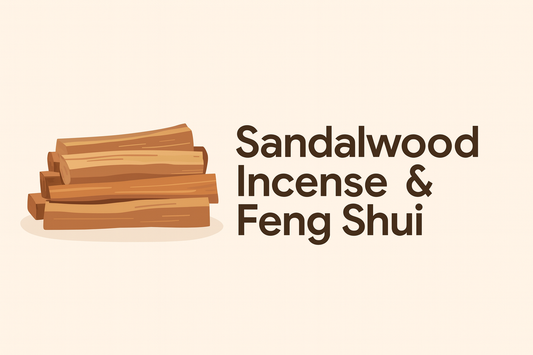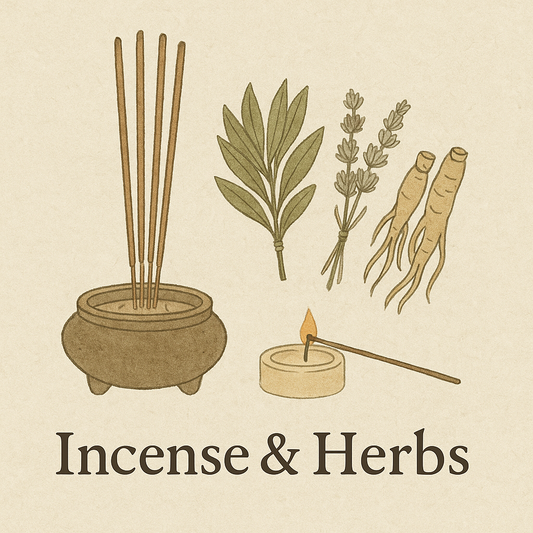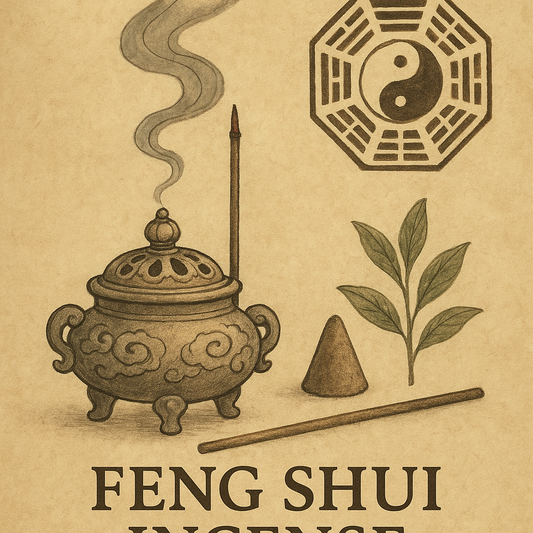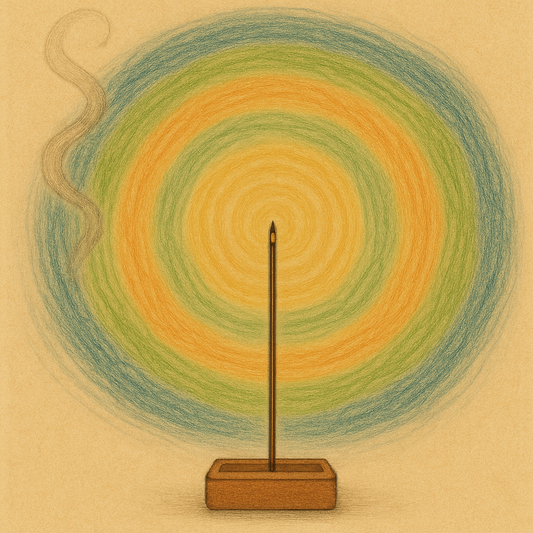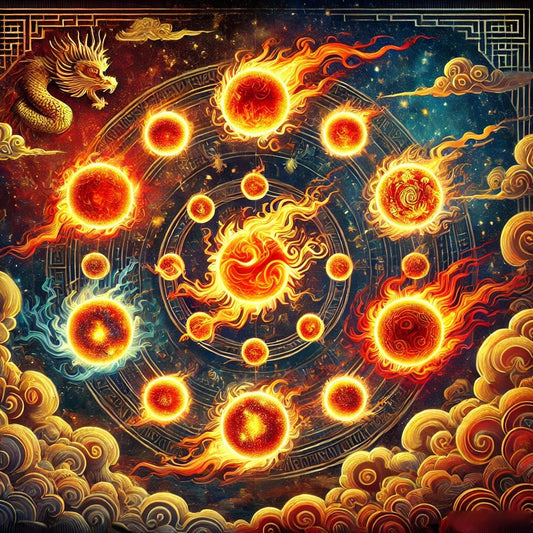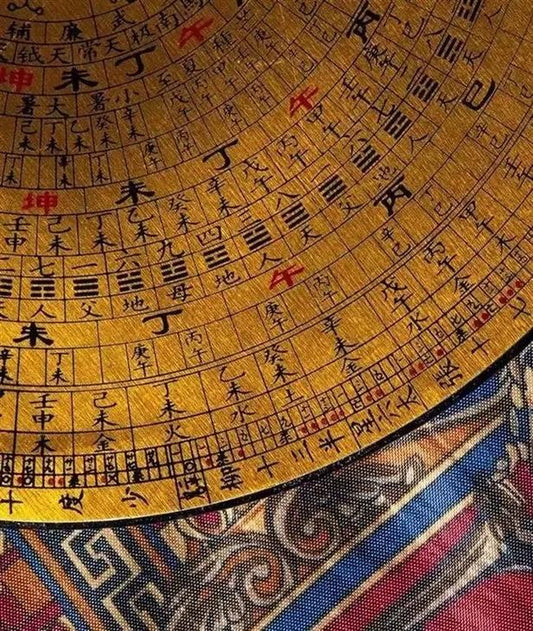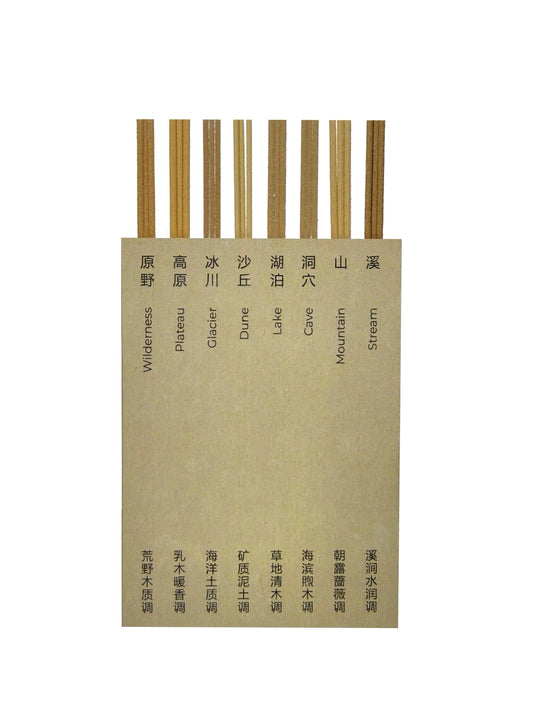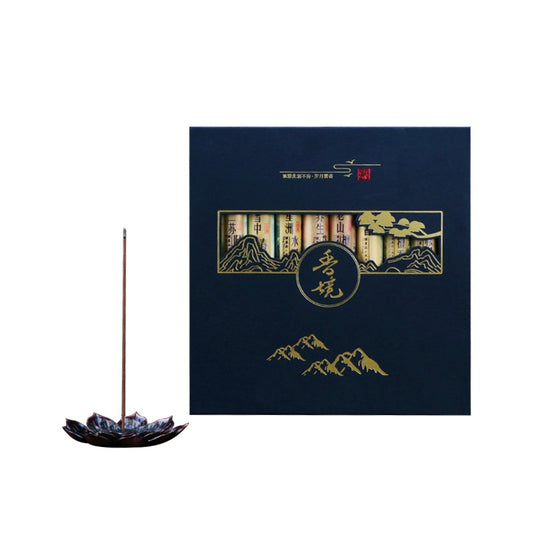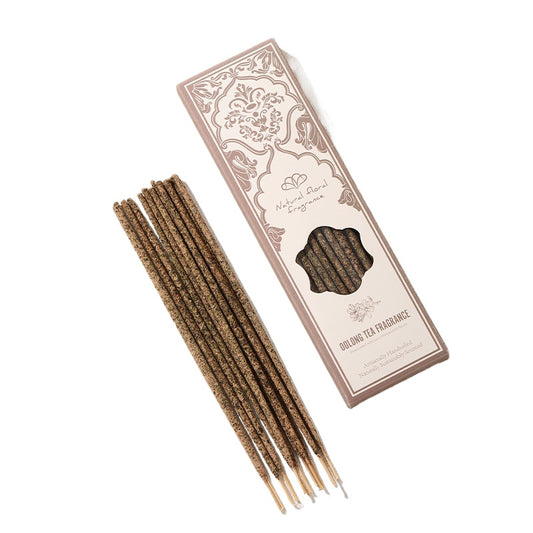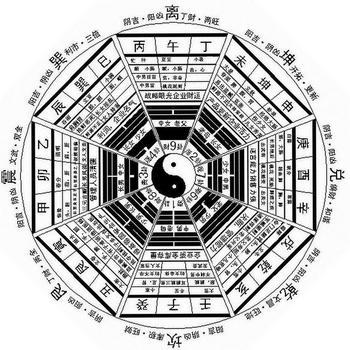
What is Five Elements?
I. Introduction: The Ancient Wisdom of the Five Elements
The Five Elements, known as Wu Xing, represent a foundational concept within Traditional Chinese Medicine (TCM) and Chinese philosophy. This framework extends beyond a mere classification of static "elements"; it describes dynamic "phases," "forces," or "movements" that encompass everything in the universe, from natural phenomena to human physiology and psychology. This dynamic perspective is crucial, as it portrays health not as a static condition but as a continuous state of balanced movement and adaptation. This understanding is central to diagnosing health conditions, guiding treatments, and promoting overall well-being by elucidating the intricate relationships between natural forces and their influence on human health.
The origins of the Five Elements Theory can be traced back over two millennia, with its earliest formal documentation found in ancient Chinese texts such as the Huangdi Neijing (The Yellow Emperor's Classic of Internal Medicine). This theory was significantly developed during the Warring States period and subsequently refined throughout the Han Dynasty. Its philosophical underpinnings are deeply rooted in Taoist cosmology, which emphasizes the profound interconnectedness of all entities within the cosmos. While the term "Wuxing" itself appeared in earlier texts like
Guo Yu (Discourses of the States) during the Western Zhou period in the eighth century BCE, its conceptualization and systematic application gained clarity and coherence during the Han Dynasty, notably through influential works such as Shangshu (Book of Documents) and Huainanzi (The Book of Master Huainan). This evolution highlights that the theory is a sophisticated categorization system, meticulously derived from centuries of observation of natural patterns and their correlations with human physiology and psychology. This empirical foundation, combined with philosophical principles, imbues the theory with a pragmatic and applicable quality, establishing it as a valuable tool for comprehending and interacting with both the natural world and the human body.
II. Decoding the Elements: Characteristics and Correspondences
Each of the five elements—Wood, Fire, Earth, Metal, and Water—embodies distinct qualities, energies, and associations that profoundly influence both the natural world and human existence. A comprehensive understanding of these individual characteristics is fundamental to appreciating their intricate interplay within the broader system.
A. Wood (木): Growth, Vision, and Adaptability
Wood symbolizes expansion, flexibility, and new beginnings, representing the growing, outward-reaching stage of matter, much like a tree extending towards sunlight. It embodies qualities of strength and flexibility, akin to the resilience of bamboo. When Wood energy is in a balanced state, it fosters creativity, optimism, adaptability, motivation, and robust decision-making abilities. This balanced energy promotes vision, strategic planning, and the capacity to overcome obstacles and initiate progress. Conversely, an imbalance in Wood may manifest as impatience, aggression, frustration, or rigidity. Individuals experiencing such an imbalance might also contend with issues related to personal boundaries and growth. Wood is primarily associated with the liver and gallbladder (yin and yang organs), the spring season, the color green (also blue and cyan), windy weather, and the emotion of anger. The soul, or Hun, is also connected to the Wood element.
B. Fire (火): Passion, Joy, and Connection
Fire represents warmth, enthusiasm, and vibrant energy, characterized by its dynamic, upward movement. It signifies a stage of prosperity and is distinctly Yang in nature. In a balanced state, Fire energy promotes joy, expressiveness, confidence, emotional warmth, and a profound capacity for connecting deeply with others. It ignites passion and enhances mental clarity. However, an imbalance can lead to various manifestations: an excess of Fire may cause restlessness, emotional detachment, hyperactivity, manic behavior, or superficial relationships. Conversely, a deficiency in Fire energy can result in feelings of loneliness, a lack of interest in life, or a tendency to be closed off. Fire is linked to the heart and small intestine (along with the pericardium and triple heater), the summer season, the color red, and the emotion of joy. The Shen, often translated as mind, spirit, or consciousness, is said to be housed in the Heart.
C. Earth (土): Stability, Nurturing, and Grounding
Earth embodies grounding, nourishment, practicality, and serves as the central point of physical matter. Its inherent energy is stabilizing and conserving. When Earth energy is balanced, it supports compassion, loyalty, overall stability, robust digestion, and a calm, grounded mental state. It fosters empathy and a profound sense of inner peace. An imbalance, however, can lead to worry, overthinking, feelings of being ungrounded, self-pity, greed, or various digestive issues. Earth is associated with the spleen and stomach, the transitional period of late summer (or the turn of each season), the color yellow (also ochre, orange, beige, and brown), and the emotion of worry or pensiveness. The Yi, considered the Primal Spirit, is also linked to the Earth element.
D. Metal (金): Structure, Clarity, and Refinement
Metal brings order, discipline, and refinement, characterized by firmness and rigidity. Its energetic motion is contracting, drawing inwards. In a balanced state, Metal energy sharpens clarity and decision-making, promotes organization, and fosters a sense of acceptance and integrity. It cultivates self-reliance and resilience. Conversely, an excess of Metal may lead to rigidity, harsh criticism, controlling behaviors, sadness, attachment, or difficulty in releasing emotions. Physical manifestations of Metal imbalance can include respiratory issues or various skin problems. Metal is linked to the lungs and large intestine, the autumn season, the color white (also grey and metallic shades), and the emotion of grief or sadness.
E. Water (水): Wisdom, Intuition, and Flow
Water embodies intuition, reflection, and calm, characterized by its fluidity and adaptability. It is considered the most yin of the five elements and serves as the fundamental source of vitality. When Water energy is balanced, it promotes adaptability, inner peace, resilience, wisdom, and determination. This balance allows an individual to navigate life's challenges smoothly, with inherent strength and courage. An imbalance in Water, however, might manifest as excessive fear, emotional overwhelm, indecisiveness, a lack of courage, or issues related to the kidneys and bladder. It can also lead to profound exhaustion or significantly low motivation. Water is associated with the kidneys and bladder, the winter season, the color black (also blue), and the emotion of fear. The kidneys are understood to store vital energy (Jing) and exert influence over growth, reproduction, and willpower.
A significant principle within TCM is the intrinsic link between physical symptoms and emotional states. For each element, the theory consistently connects physiological manifestations with psychological conditions. For example, persistent anger, associated with the Wood element, can lead to liver-related issues, and conversely, liver dysfunction can exacerbate feelings of anger. This highlights TCM's holistic perspective, where physical ailments are rarely viewed in isolation from emotional well-being. An imbalance in one element can thus manifest across both physiological and psychological domains, underscoring the necessity of addressing both mind and body in treatment and daily health practices.
Furthermore, imbalances are not merely generic deviations from equilibrium but are specifically categorized as either an "excess" or a "deficiency" of an element. For instance, an overabundance of Fire energy might present as manic behavior or being scattered, whereas a deficiency could manifest as being closed off or lacking interest. This distinction is critical for precise diagnosis and treatment in TCM. The therapeutic approach for an excess often differs significantly from that for a deficiency; for example, cooling activities might be prescribed for excess Fire, while warming practices would be recommended for deficient Fire. This nuanced understanding enables highly personalized health strategies, moving beyond a uniform approach to wellness.
Table 1: Five Elements: Organs, Emotions, and Key Characteristics
|
Element |
Associated Organs |
Associated Emotion(s) |
Key Balanced Traits |
Key Imbalance Manifestations |
|
Wood |
Liver/Gallbladder |
Anger/Frustration |
Creativity, Optimism, Adaptability |
Impatience, Aggression, Rigidity |
|
Fire |
Heart/Small Intestine |
Joy/Agitation |
Passion, Enthusiasm, Connection |
Restlessness, Emotional Detachment, Mania |
|
Earth |
Spleen/Stomach |
Worry/Pensiveness |
Stability, Nurturing, Groundedness |
Worry, Overthinking, Ungroundedness |
|
Metal |
Lungs/Large Intestine |
Grief/Sadness |
Structure, Clarity, Discipline |
Rigidity, Harsh Criticism, Sadness |
|
Water |
Kidneys/Bladder |
Fear |
Wisdom, Intuition, Flexibility |
Fear, Emotional Overwhelm, Indecisiveness |
This table provides a concise summary of the core correspondences, serving as a practical reference for understanding the intricate relationships within the Five Elements framework. It facilitates rapid identification of potential elemental imbalances based on observed physical and emotional states, thereby guiding initial considerations for restoring equilibrium.
III. The Dynamic Dance: Cycles of Interaction
The Five Elements are not isolated entities but exist in a perpetual state of dynamic interaction, continuously influencing and regulating one another to maintain balance within the body and the environment. These fundamental interactions are described by two primary cycles: the Creative (Sheng) Cycle and the Controlling (Ke) Cycle.
A. The Creative (Sheng) Cycle: Nurturing and Generating Relationships
The Creative or Sheng Cycle illustrates how each element generates or nourishes the next, akin to a supportive mother-child relationship. This cycle is essential for promoting growth, facilitating healing, and encouraging regeneration throughout the system. The sequence of generation flows as follows: Wood → Fire → Earth → Metal → Water → Wood.
Illustrative examples clarify these relationships:
-
Wood fuels Fire: Wood, when burned, creates fire. Furthermore, the wind, an attribute of Wood, provides oxygen that nourishes and sustains fire.
-
Fire creates Earth: The ashes that remain after fire burns enrich the soil, contributing to the formation of Earth.
-
Earth produces Metal: Minerals and metals are formed and extracted from within the Earth.
-
Metal enriches Water: Water can condense on metal surfaces. Additionally, water often flows from mountain tops, where metal ores are typically found, symbolizing this generative link.
-
Water nurtures Wood: Water is indispensable for the growth and flourishing of trees and plant life, thus nurturing Wood.
Therapeutically, this cycle implies that strengthening an element can be achieved by nourishing its "mother" in the sequence. This continuous cycle is understood to generate increased energy and vitality within the system.
B. The Controlling (Ke) Cycle: Regulating and Balancing Relationships
The Controlling or Ke Cycle functions as a regulatory mechanism, ensuring that each element remains in check and preventing any single element from becoming excessively dominant. This relationship is often analogized to that between a "grandmother and grandchild," where the grandmother exerts a necessary, albeit sometimes forceful, influence over the grandchild. The sequence of control follows this pattern: Water → Fire → Metal → Wood → Earth → Water.
Examples demonstrate this controlling dynamic:
-
Water controls Fire: Water is capable of extinguishing flames.
-
Fire controls Metal: Intense heat from fire can melt and reshape metal.
-
Metal controls Wood: A metal axe is used to cut and shape trees.
-
Wood controls Earth: The roots of trees penetrate and bind the soil, preventing erosion.
-
Earth controls Water: Earth can absorb or dam water, regulating its flow.
From a therapeutic standpoint, this cycle is utilized to rebalance an element that has become excessive by engaging its controlling relationship. The analogy of the "grandmother-grandchild" relationship within the controlling cycle offers a nuanced understanding of its diagnostic power. This analogy underscores the inherent wisdom of the regulatory mechanism; however, it also illuminates how pathological states can arise. When the "grandmother" (the controlling element) becomes overly strong, or the "grandchild" (the controlled element) becomes too weak, the relationship can shift from beneficial regulation to a destructive dynamic. This provides a robust diagnostic framework in TCM, enabling practitioners to identify not only
what is imbalanced but also why—for instance, whether it is due to an over-controlling element or a weak element being overwhelmed. This clarity guides more precise and effective treatment strategies.
Imbalances in the Five Elements can also arise from more complex interactions, such as "Overacting" (Cheng cycle), where a strong element attacks a deficient one through the controlling pathway, or "Counteracting" (Wu cycle), where an element attacks its controller in a reverse, abnormal direction. These disruptions lead to blockages or erratic flows of Qi (vital energy) and can manifest as illness. The overarching objective in TCM is to restore the harmonious flow and balance within these intricate cycles, recognizing that an imbalance in one element will inevitably cascade and affect others throughout the interconnected system. This reinforces the holistic nature of TCM. It implies that addressing a symptom in one organ or system may necessitate intervening with a seemingly unrelated element that is either nourishing it or controlling it. For example, liver issues (Wood) might be approached by supporting the kidneys (Water, its generative element) or by modulating the lungs (Metal, its controlling element). This complex web of interactions highlights that genuine healing involves comprehending and re-establishing balance across the entire elemental system, rather than merely targeting isolated symptoms.
IV. The Five Elements and Personal Well-being
The Five Elements Theory provides a comprehensive framework for understanding and enhancing personal well-being, encompassing both physical health and the subtle energies of our living environments.
A. Health and Emotional Harmony
Traditional Chinese Medicine posits that the human body is a microcosm reflecting the macrocosm of nature, with internal balance profoundly influenced by the dynamic forces of the natural world. The Five Element Theory serves as the core framework for comprehending and treating these internal imbalances. A fundamental tenet of TCM is the deep mind-body connection, where emotions are not merely psychological states but are integral to each element and directly impact organ function.
-
Wood: Associated with the Liver and Gallbladder. The emotion linked to Wood is anger. Excessive anger or persistent irritability can adversely impact the liver, potentially leading to physical symptoms such as headaches, dizziness, and poor circulation. Conversely, an imbalance originating in the liver can manifest as mood swings and heightened irritability or resentment.
-
Fire: Associated with the Heart and Small Intestine. The emotion is joy. While joy is generally positive, an excess of joy (manifesting as agitation or restlessness) or a profound lack of joy (depression) can affect the heart, thereby impacting circulation and mental clarity.
-
Earth: Associated with the Spleen and Stomach. The emotion is worry or pensiveness. Excessive worry or overthinking can significantly impact the spleen, leading to symptoms such as fatigue, loss of appetite, poor digestion, and muscle weakness.
-
Metal: Associated with the Lungs and Large Intestine. The emotion linked to Metal is grief or sadness. An imbalance in this element might manifest physically as shortness of breath, frequent colds, and allergies, or psychologically as depression.
-
Water: Associated with the Kidneys and Bladder. The emotion is fear. An imbalance can lead to excessive fear, phobias, a lack of courage, chronic exhaustion, low motivation, and even skeletal disorders. The kidneys are considered the storehouse of vital energy (Jing) and significantly influence growth, reproduction, and willpower.
Recognizing the signs of elemental balance and imbalance is key to maintaining health. A balanced element supports the body's natural functions, promoting overall health and stability. For instance, balanced Wood energy fosters adaptability and motivation; Fire energy cultivates joy and confidence; Earth provides stability and robust digestion; Metal offers structure and clarity; and Water promotes wisdom and resilience. Conversely, identifying imbalances involves careful observation of physical symptoms, emotional states, and behavioral patterns. For example, chronic irritability may signal a Wood imbalance, persistent anxiety a Fire imbalance, excessive overthinking an Earth imbalance, prolonged sadness a Metal imbalance, and overwhelming fear a Water imbalance.
B. Environmental Balance: Principles of Feng Shui
Feng Shui, an ancient Chinese practice, focuses on cultivating harmony between individuals and their environments. Within this practice, each element governs specific spatial energies, and understanding their application is central to creating a nurturing, dynamic atmosphere in living and working spaces. The principles of the Five Elements profoundly influence furniture arrangement, decor choices, and color schemes.
Practical applications for enhancing spatial energy include:
-
Wood: To foster creativity and growth, incorporating wooden furniture, live plants, or trees, and using green or brown colors in decor is beneficial.
-
Fire: To amplify passion and energy, adding candles, warm lighting, or infusing red, orange, or purple tones into decor is effective.
-
Earth: To generate grounding, balance, and stability, utilizing earth tones (yellow, beige, light brown), ceramics, clay pots, stones, or crystals is recommended.
-
Metal: To enhance clarity, logic, structure, and organization, incorporating metal furniture, circular mirrors, or white, grey, and metallic shades is advisable.
-
Water: To inspire wisdom, insightfulness, flow, and abundance, integrating water features like aquariums or fountains, or using blue and black artwork and decorations, is beneficial.
It is important to recognize that an excess of any single element can lead to chaos, while a deficiency can result in stagnation. Therefore, regular observation and assessment of the space are crucial to identify dominant or lacking elements. Feng Shui is not a one-time application but an ongoing process of adjustment to maintain environmental harmony. This approach transforms interior design from a purely aesthetic pursuit into a proactive wellness strategy. By consciously arranging elements in living and working spaces, individuals can subtly influence their mood, energy levels, productivity, and overall sense of harmony. This suggests that the external environment is not merely a backdrop but an active participant in internal well-being, offering a tangible method to apply elemental theory for everyday benefit.
Furthermore, the absence of an element can be a subtle yet significant source of energetic imbalance and stress. When an element is missing from the Sheng (creative) cycle in a space, it can disrupt the natural flow, potentially causing other elements to over-control or become imbalanced. This can manifest as subtle, persistent feelings of unease, a lack of support, or even conflict, highlighting the importance of ensuring a complete and harmonious representation of all elements in one's surroundings for optimal well-being.
V. Aligning with Nature's Rhythms: Seasonal Wisdom and Personal Affinity
The ancient wisdom of the Five Elements is intrinsically linked to the natural world's cyclical changes, particularly as articulated through the 24 Solar Terms.
A. The 24 Solar Terms: A Calendar for Elemental Living
The 24 Solar Terms (Jieqi) constitute an ancient Chinese calendar system that divides the year into 24 equal periods, meticulously reflecting the sun's annual motion and serving as a vital guide for agricultural production and daily life. Originating in the Yellow River Basin, this system seamlessly integrates astronomy, farming practices, phenology (the study of natural phenomena), and folklore. Its profound cultural significance is underscored by its recognition by UNESCO in 2016 as an Intangible Cultural Heritage of Humanity, often hailed as "China's fifth great ancient invention". The terms not only mark major seasonal changes, such as "Start of Spring" and "Summer Solstice," but also delineate finer climatic shifts, exemplified by "Rain Water," "Awakening of Insects," and "Frost's Descent".
These 24 Solar Terms align closely with the Five Elements, with each season embodying and expressing a unique elemental energy that directly influences human health and well-being.
-
Spring (Wood): This season is characterized by renewal, growth, and an upward surge of energy. The focus during this time is on supporting liver health.
-
Summer (Fire): As the season of abundance, summer brings warmth and outward expansion. Emphasis shifts to nurturing heart health.
-
Late Summer (Earth): This period serves as a crucial transition, emphasizing nourishment and grounding. Support for spleen and stomach health is paramount.
-
Autumn (Metal): A season of harvest, contraction, and introspection, autumn calls for attention to lung health.
-
Winter (Water): This is a time for rest, energy conservation, and deep introspection. The focus is on supporting kidney health.
By aligning daily life with these seasonal rhythms, the body is naturally guided towards balance and enhanced vitality.
B. Cultivating Balance Through Seasonal Adaptations
A general principle in TCM is "春夏养阳,秋冬养阴" (Nourish Yang in spring/summer, nourish Yin in autumn/winter). Adjusting diet and daily routines according to the solar terms is a key strategy for adapting to seasonal changes and maintaining good health.
-
Spring (Wood):
-
Diet: Emphasize fresh greens, sprouted grains, and moderate use of sour and sweet flavors. Avoid excessive warm tonics, which might exacerbate internal heat. Beneficial foods include spinach, lotus seeds, coix seed, peanuts, walnuts, and pig liver.
-
Lifestyle: Encourage early rising and outdoor exercise to activate Yang Qi. It is important to maintain a cheerful spirit and actively avoid anger, as "anger injures the liver". This period is ideal for initiating new projects.
-
Summer (Fire):
-
Diet: Focus on cooling and hydrating foods such as bitter melon, cucumber, watermelon, tomatoes, and seaweed. Moderate intake of sour foods is advised to consolidate the body's exterior, and salty foods to nourish the heart. Spicy and greasy foods should be avoided.
-
Lifestyle: Maintain stable emotions, avoiding extremes of joy or sorrow. Engage in moderate exercise, taking care to avoid over-fatigue. Protection against heatstroke is crucial, including staying well-hydrated, wearing loose clothing, and avoiding strenuous activity during the hottest parts of the day. Adequate rest is also highly important.
-
Autumn (Metal):
-
Diet: Prioritize nourishing and supportive foods, with a strong emphasis on "nourishing yin and moistening dryness" (滋阴润燥). Incorporate sesame, sticky rice, and dairy products. Fruits like apples, persimmons, mandarins, pears, grapes, and longan are beneficial. It is recommended to reduce pungent foods such as onion, ginger, garlic, and chili, while increasing sour foods to support liver function. Cold foods like salads and melons should be avoided, as "autumn melons harm the spleen and stomach".
-
Lifestyle: Adjust sleep patterns to align with the shortening days. Engage in appropriate exercise and stretching to maintain flexibility and circulation. Cultivate mental tranquility.
-
Winter (Water):
-
Diet: Focus on warming, mineral-rich foods such as soups, broths, and higher-calorie options. Examples include lamb with red dates and sticky rice, and traditional tonics like ginseng/astragalus wine or wolfberry/chrysanthemum rehmannia pills.
-
Lifestyle: Emphasize energy conservation and ample rest. Staying warm, particularly protecting the back, is vital as it is considered "Yang within Yang". Reduce outdoor activities during extreme cold and ensure warm clothing. Avoid excessive cold exposure.
It is worth noting that ancient texts sometimes present seemingly contradictory dietary recommendations for seasonal adjustments. For instance, Liji: Neize suggests "spring more sour, summer more bitter, autumn more pungent, winter more salty," while Sun Simiao advises "spring less sour, more sweet; summer less bitter, more pungent; autumn less pungent, more sour; winter less salty, more bitter". This apparent contradiction actually reflects two distinct yet complementary approaches in TCM: "乘旺" (Chéng Wàng - Riding the Peak), which involves consuming foods that correspond to the dominant elemental energy of the season to enhance it, and "扶衰" (Fú Shuāi - Supporting the Weak), which focuses on foods that support elements potentially weakened by the dominant seasonal energy or to prevent an element from becoming excessively dominant. For example, in spring (Wood), an overabundance of sour (Wood's flavor) could potentially over-control Earth; thus, reducing sour and increasing sweet (Earth's flavor) would support Earth. Both approaches ultimately aim for balance, and the overarching principle of "五味不可偏多" (no single flavor should be consumed in excess) applies universally.
Table 2: Seasonal Elemental Adaptations: Diet and Lifestyle Recommendations
|
Season |
Dominant Element |
Key Organs to Support |
Dietary Focus |
Lifestyle/Emotional Focus |
Example Foods |
|
Spring |
Wood |
Liver/Gallbladder |
Fresh greens, sour/sweet (moderate) |
Growth, optimism, avoid anger, outdoor activity |
Spinach, dates, leeks |
|
Summer |
Fire |
Heart/Small Intestine |
Cooling, hydrating, bitter/salty (moderate) |
Joy, connection, avoid agitation, moderate exercise, heat protection |
Bitter melon, cucumber, watermelon |
|
Late Summer |
Earth |
Spleen/Stomach |
Nourishing, grounding, sweet |
Stability, nurturing, avoid worry, mindful eating |
Squash, rice, sweet potatoes |
|
Autumn |
Metal |
Lungs/Large Intestine |
Moistening, pungent/sour (moderate) |
Clarity, letting go, adjust sleep, moderate exercise |
Pumpkin, carrots, nuts, sesame |
|
Winter |
Water |
Kidneys/Bladder |
Warming, mineral-rich, salty/bitter (moderate) |
Rest, conservation, introspection, keep warm, avoid fear |
Lamb, ginger, broths |
This table serves as a practical, holistic guide for preventative health, synthesizing information on seasonal elemental correspondences. It provides actionable, season-specific recommendations for diet and lifestyle, empowering individuals to proactively adjust their habits throughout the year to maintain elemental balance and enhance overall well-being.
VI. Integrating the Five Elements into Daily Life: Practical Pathways
The profound wisdom of the Five Elements is not merely theoretical; it offers practical pathways for cultivating balance and vitality in daily routines. By consciously aligning with these energies, individuals can enrich their emotional and spiritual lives [User Query].
A. Mindful Practices
Incorporating mindfulness practices is a key strategy for elemental balance. Meditation, for instance, supports the Water element, fostering inner peace and introspection. Deep breathing exercises, or breathwork, nourish the Metal element, enhancing clarity and promoting lung health. Movement practices such as Yoga, Tai Chi, or seasonally appropriate exercises are crucial for regulating energy flow and restoring balance across all elements. Specific Qigong practices are designed to integrate and generate energy within the Five Elements, contributing to overall vitality. Regular exercise, particularly stretching, helps maintain flexibility (Wood) and strengthens circulation (Fire).
B. Conscious Consumption: Eating for Elemental Balance
As detailed in Section V, aligning meals with the dominant element of each season is fundamental for maintaining balance. Element-based meal planning involves selecting foods that address specific elemental needs. For example, if an individual experiences sluggishness or heaviness, indicative of an Earth imbalance, opting for light, easily digestible meals with warming spices can be beneficial. For Fire imbalances, characterized by inflammation, cooling foods like leafy greens and cucumber can help restore equilibrium. In cases of Metal deficiency, which may manifest as mental fog, incorporating pungent foods and specific breathing exercises is recommended. Additionally, herbal tonics can be utilized to strengthen elemental imbalances, such as hibiscus for Fire, licorice root for Earth, white peony for Metal, reishi for Water, and dandelion for Wood.
C. Harmonious Environments: Simple Feng Shui Adjustments for Daily Living
Maintaining harmonious environments through simple Feng Shui adjustments is another practical pathway. Daily decluttering ensures the free flow of positive energy within spaces. Promptly addressing minor household issues, such as fixing leaky faucets (which symbolize happiness and abundance draining away) and replacing burnt-out lightbulbs (which can reflect stress or poor health), is also important. Strategic furniture placement, such as avoiding having one's back to the door in key areas like an office or living room, helps maintain awareness and prevent distraction. Similarly, ensuring the bed is not directly in line with the door promotes more restful sleep. Continuous assessment and adjustment of decor to maintain elemental balance, for instance, adding plants (Wood), candles (Fire), or water features (Water) as needed, contributes to a supportive living environment.
VII. Conclusion: Cultivating a Harmonious Life through Ancient Wisdom
The Five Elements Theory stands as a profound reflection of humanity's deep connection to nature’s rhythms. It is a testament to ancient Chinese ingenuity and a vivid illustration of the intricate relationship between human existence and the natural world. By consciously balancing these energies, individuals can cultivate a profound sense of peace within themselves and their surroundings [User Query]. The theory empowers one to harmonize with nature's rhythms, enabling the body to naturally achieve and maintain balance and well-being.
Embracing the Five Elements framework offers a holistic approach to health that seamlessly integrates mind, body, and spirit. By understanding and applying these ancient principles, individuals are equipped to navigate life's transitions, adapt gracefully to seasonal changes, and cultivate a lifestyle that fosters enduring vitality, mental clarity, and profound contentment. This ancient wisdom serves as a timeless guide on the journey toward sustained health, inner stillness, and ultimate fulfillment.
Further Reading :

